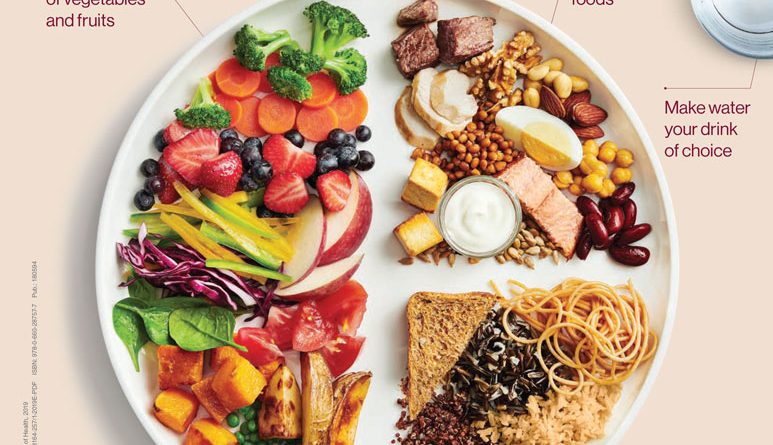Canada’s Food Guide revised
By Janet Kanters Times Editor
 Health Canada launched the new Canada’s Food Guide Jan. 22, with advice for Canadians on healthy food choices, including the regular intake of vegetables, fruits and whole grains, and eating protein foods that are plant-based.
Health Canada launched the new Canada’s Food Guide Jan. 22, with advice for Canadians on healthy food choices, including the regular intake of vegetables, fruits and whole grains, and eating protein foods that are plant-based.
One of the biggest changes in the new Food Guide, last updated in 2007, is to group plant-based and animal-based proteins in a “proteins” category. Meat enjoyed a dominant position in the previous food guide, with a meat-and-alternatives category and a recommended two to three servings daily for adults depending on their sex and age. It now features much less prominently.
According to the Canadian Cattlemen’s Association, a small amount of lean beef can provide high-quality, readily available protein and many other nutrients with relatively low calories.
“Health Canada missed an opportunity to inform Canadians of the nutritional benefits of eating lean beef as a protein source,” said the CCA in a statement. “It would be unfortunate if Canadians interpret this bias toward plant-based proteins as a signal to remove red meat from their diets. Dietary advice to reduce red meat consumption could put some Canadians at risk of iron, zinc and vitamin B12 deficiencies and inadequate protein intake.”
The new guide also minimizes dairy consumption. It touts water – not milk – as the “drink of choice” and eliminates the previous milk-and-alternatives food group.
“While the food guide has changed, milk products continue to play a valuable role in helping Canadians make healthy-eating decisions on a daily basis,” says Isabelle Neiderer, director-nutrition and research at Dairy Farmers of Canada. “The scientific evidence supporting the nutritional benefits of milk products in the promotion of bone health and prevention of chronic diseases, for instance, is stronger than ever, and new evidence continues to accumulate. Current and emerging scientific evidence does not support a continued focus on lower fat milk products as it reveals that milk products that contain more fat are not associated with harmful health effects and could even provide benefits.”
Canada’s Food Guide has been around in one form or another since 1942. According to Health Canada, eating in accordance with the new Food Guide can help Canadians meet nutrient needs, reduce their risk of developing diseases such as diabetes, heart disease and certain types of cancer, and promote overall health and well-being.
While the Food Guide emphasizes the benefits of plant-based foods, it includes foods such as fish, shellfish, eggs, poultry, lean red meat, lower-fat milk, lower-fat yogurts, and cheeses lower in fat and sodium.
The Food Guide also advises regular intake of water to help reduce the amount of sugars people consume and help protect teeth from frequent exposure to sugar.
The new Food Guide is based on current nutrition evidence and builds on the steps of the Brazilian Food Guide, considered the international gold standard. The focus is on whole foods prepared at home. Rather than dictate number of servings and serving sizes, it shows how to “build a plate” with half the plate consisting of vegetables and/or fruit, a quarter plate for grains and a quarter for proteins.
The Heart and Stroke Foundation of Canada lauded the new Food Guide.
“It was designed to make preparing and sharing healthy food a pleasure, while improving our health,” said Yves Savoie, CEO of Heart and Stroke. “As we’ve said in the past, ‘we need to cut the crap.’ Sugary drinks are the single greatest contributor of sugar in our diets, and Canadians get half of their daily calories from highly processed foods, with kids getting the most.”
The Dietitians of Canada stated the launch represents a “bold and courageous step” for health promotion in Canada.
“What is striking about the new Canada’s Food Guide is the shift to a broader approach – talking not only about what Canadians should eat, but also how they should eat,” said CEO Nathalie Savoie. “The recommendations and online tools for consumers are easy to understand, evidence informed and in line with the type of guidance that dietitians already use with their patients, clients and communities.”

